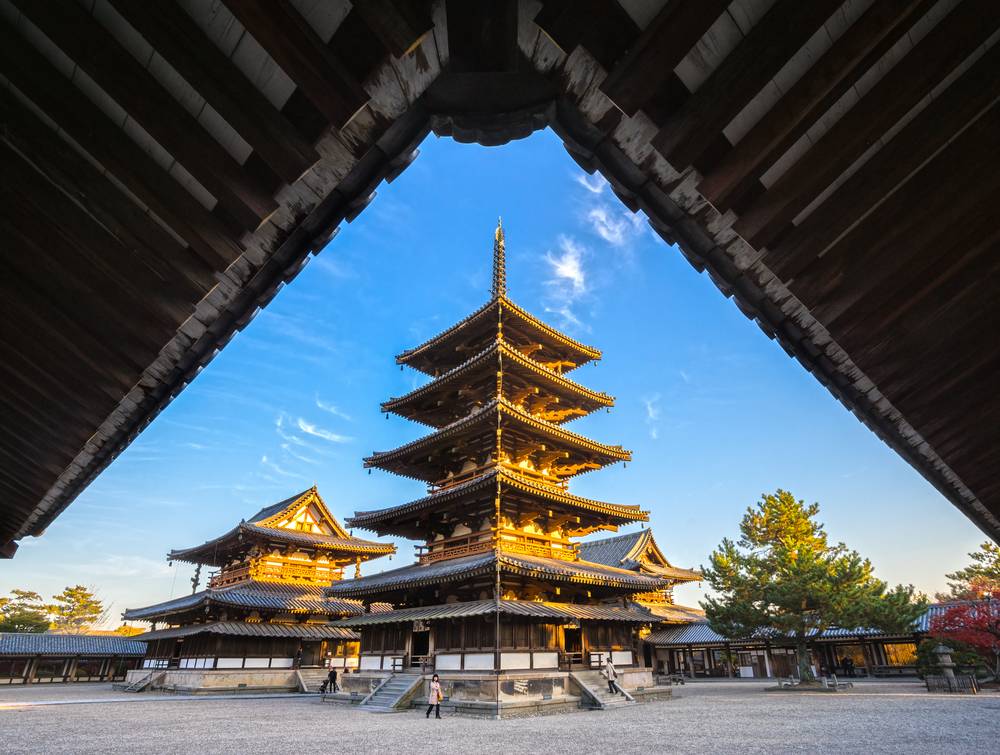thecancrizans.com – Japan’s architectural landscape is a fascinating blend of ancient traditions and cutting-edge modernity. From serene temples that whisper stories of the past to towering skyscrapers that define futuristic skylines, Japan’s architecture captures the essence of a country that seamlessly merges history with innovation.
The Timeless Beauty of Traditional Architecture
Japan’s traditional architecture is characterized by its harmonious relationship with nature and its use of natural materials. One of the most iconic examples is the Shinto shrine, which often features wooden structures with thatched roofs and is surrounded by natural landscapes. These shrines, such as the famous Ise Grand Shrine, are designed to blend with their surroundings, reflecting the Shinto belief in the sacredness of nature.
Buddhist temples are another cornerstone of Japan’s architectural heritage. The Kinkaku-ji (Golden Pavilion) in Kyoto, with its stunning gold leaf exterior and tranquil garden setting, exemplifies the elegance and spiritual harmony of Zen Buddhist architecture. Similarly, the Todai-ji in Nara, one of the largest wooden buildings in the world, showcases the grandeur and historical significance of Japan’s religious structures.
Traditional Japanese homes, or minka, are also noteworthy for their distinctive features, such as tatami mat flooring, sliding shoji screens, and engawa (verandas). These elements emphasize simplicity and functionality, creating spaces that are both aesthetically pleasing and practical.
The Rise of Modern Architectural Marvels
Japan’s modern architecture has gained international acclaim for its innovation and creativity. The country’s rapid urbanization and technological advancements have spurred the development of iconic structures that push the boundaries of design.
Tokyo Skytree, the tallest structure in Japan, stands as a symbol of modern engineering and design. This broadcasting and observation tower offers breathtaking views of Tokyo and represents the city’s status as a global metropolis.
Contemporary architects like Kenzo Tange and Tadao Ando have played pivotal roles in shaping Japan’s modern architectural landscape. Tange’s designs, such as the Hiroshima Peace Memorial Museum, blend traditional Japanese aesthetics with modernist principles, while Ando’s works, like the Church of the Light, are renowned for their minimalist beauty and innovative use of natural light.
The Nakagin Capsule Tower in Tokyo, designed by Kisho Kurokawa, is a pioneering example of Metabolism, a post-war architectural movement that envisioned modular and sustainable urban living. Though now in disrepair, the tower remains a symbol of Japan’s architectural experimentation and forward-thinking.
The Global Influence and Legacy
Japanese architecture has had a profound impact on global design, influencing architects and designers worldwide. The minimalist principles seen in traditional Japanese architecture have inspired the modern minimalist movement, emphasizing simplicity, functionality, and a connection with nature.
The country’s architectural practices have also led to sustainable design innovations, with a focus on energy efficiency and environmental integration. This approach is increasingly relevant in today’s global efforts to address climate change and urban sustainability.
Conclusion
Japan’s architectural wonders, from ancient temples to modern towers, offer a captivating journey through time and innovation. By preserving its rich architectural heritage while embracing cutting-edge design, Japan continues to inspire and influence the world with its unique approach to building and living. Whether exploring the tranquil beauty of a Kyoto temple or marveling at the futuristic skyline of Tokyo, Japan’s architecture invites us to appreciate the art of building in harmony with both history and progress.
